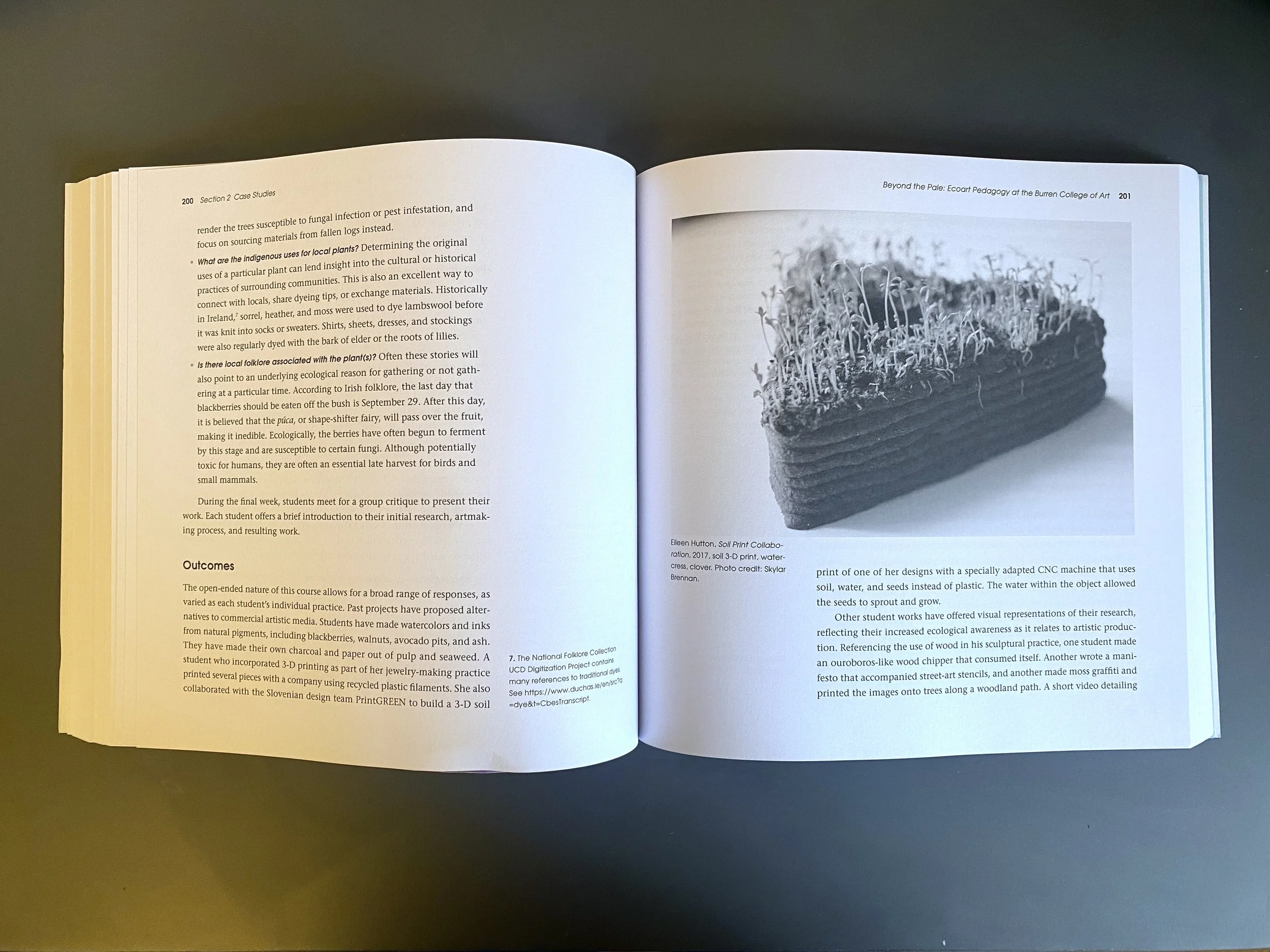My contribution to the book, Beyond the Pale: EcoArt pedagogy at the Burren College of Art, is a case study of the Art & Ecology Undergraduate course I developed at BCA. The module is grounded in ecocritical theory and the study of contemporary arts practice, while emphasizing an experimental and risk-taking approach to art making that embraces ecological thinking. The third project of the semester, The Materiality of Making, outlined in the book asks students to reflect on and then re imagine the how and the what of their studio practice. It prompts conversations about individual material consumption, carbon footprints, personal responsibility, and agency both within the studio and in daily life, and enables students to gain an understanding of local ecosystems and flora through direct engagement and encounters with place.





